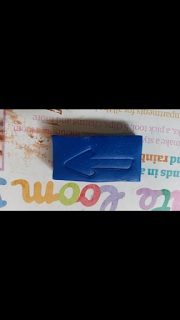For this year I decided to create a card and gift in one.
I started by making the pendant (I made this so that it can be put on a necklace or a keyring at a later date). I bought some blue polymer clay and then used an arrow stamp I had bought from Santiago to make an arrow impression in it (scallop shell rubber ink stamps can be found more easily or simply cut a design into the polymer clay)
Then I cut around the design in a rectangular shape.
I then placed a finding in each so that they can be made into jewellery later and baked the pieces as per the instructions on the packet.
Once they had cooled I painted the arrows yellow.
The images on the card come from the calendars you can buy for 4-5 Euros at the Tourist Information Office in Santiago - I have bought one of these every year and have saved them knowing that I would use them at some point.






Comments
Post a Comment